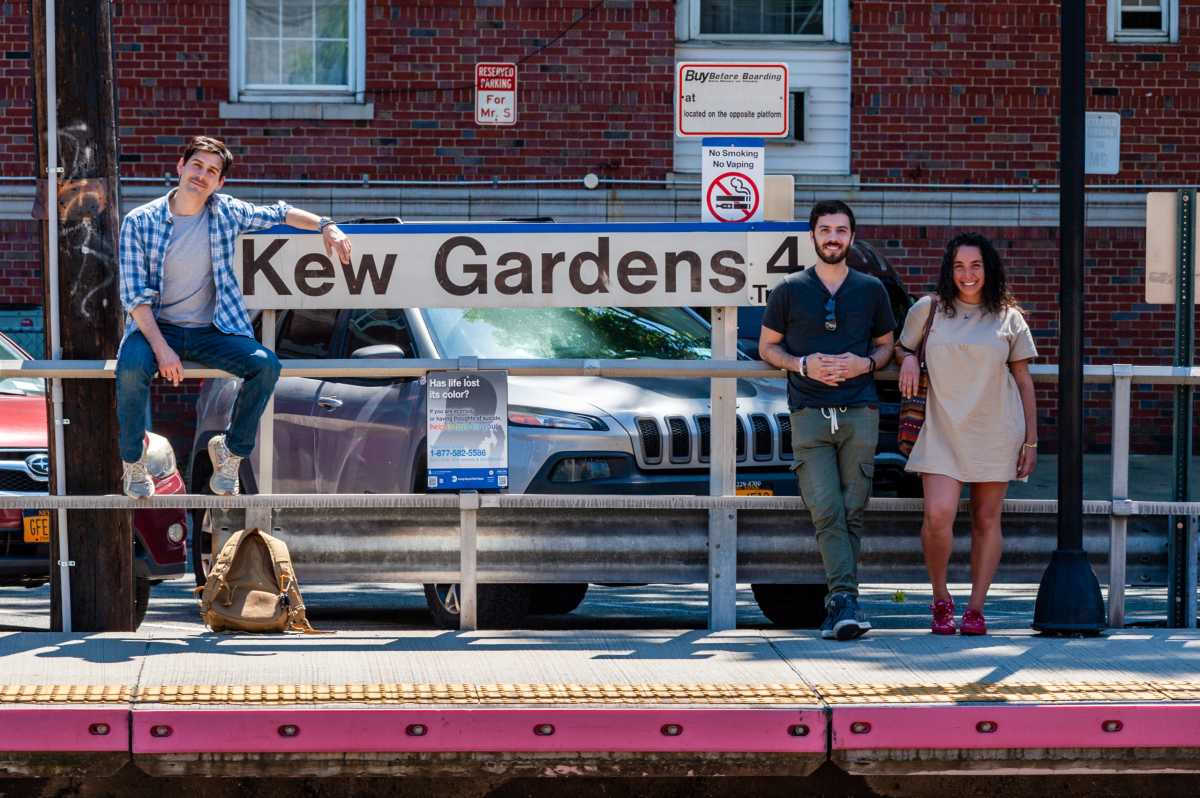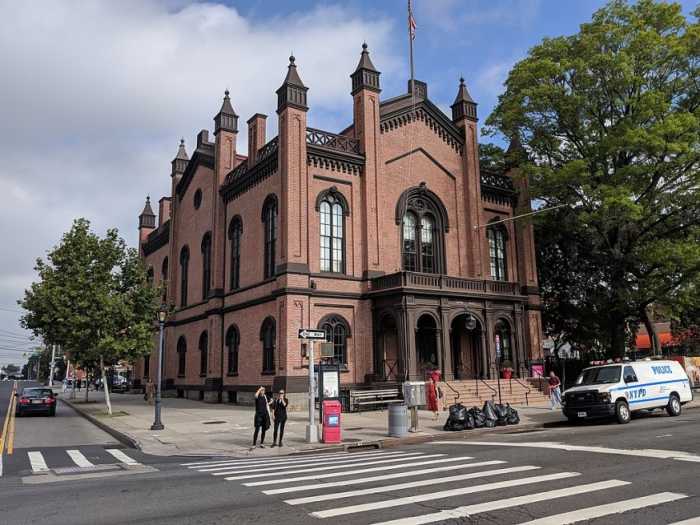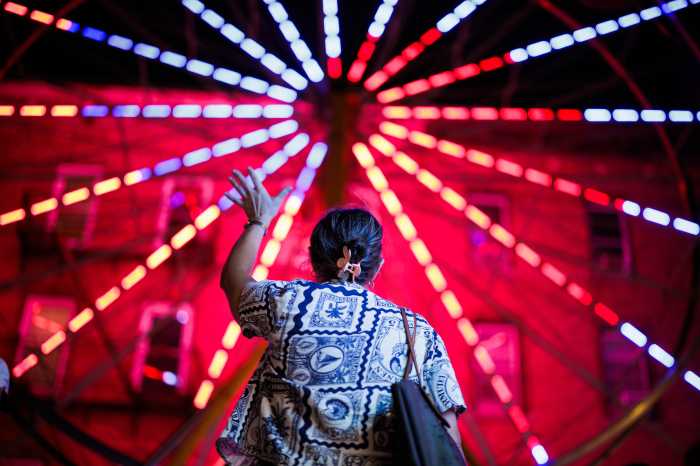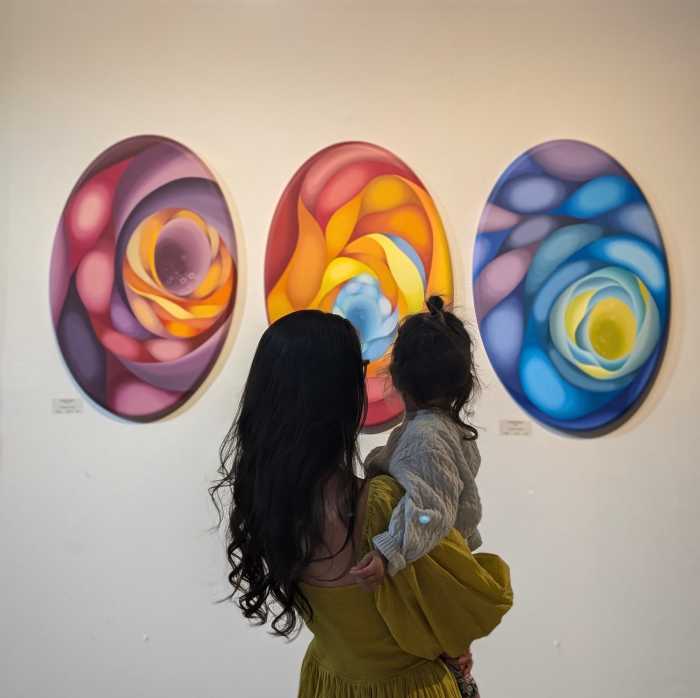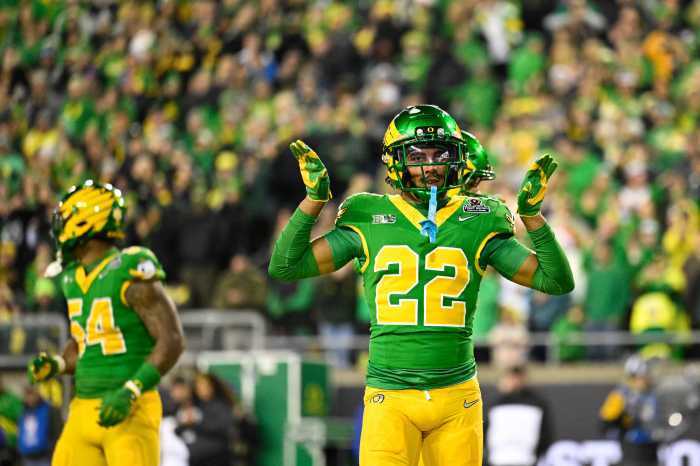Queens World Film Festival is returning for the 11th season, from June 23 to July 3, and is opening the festival with two narrative films at the Museum of the Moving Image as well as online via Film Festival Flix.
One of the films, “Mouse,” shot entirely in Forest Hills and Kew Gardens by an all Queens-based crew, tells the story of lonely groundskeeper Michael (played by Joel Bernard Michael) who deals with the crushing guilt of a local murder. Eventually, he loses himself as he desperately tries to keep an innocence he never truly lost.
“Mouse” explores what can happen to a person consumed by guilt even though they haven’t done anything wrong, but believe their inactions led to a tragic event.
QNS met up with the crew at Ateaz, a cozy coffee shop at 116-29 Metropolitan Ave. in Kew Gardens, to discuss the film.

Director and producer Adam Engel, who co-wrote the script for “Mouse” with Jase Egan, shared that the “germ for the film” was based on a former neighbor, described by Engel as a sweet, small-statured woman, who was convinced that her downstairs neighbors were shocking her through the floor.
One day she claimed she found a screwdriver in her house that didn’t belong to her and had Engel’s uncle stay with her for two days, who didn’t observe anything unusual.
Engel gave writer and actor Egan, with whom he had co-written the 2014 thriller “On a Country Road,” the gist of his idea and then they began collaborating.
Below, hear more from the crew about their process. Some answers have been edited for clarity and space.
Engel: “As usual, he [Egan] starts plugging in his segments. He helps flush out and fill in the story.”
Egan: “Usually, what we work from is Adam’s concept, and he brought me two things: He brought me this crazy story and then he brought me another concept, which was just a word, ‘guilt.’ He said, ‘I want to make a movie about guilt. How when you feel guilty about something, you can’t eat. Your food tastes gray. It doesn’t taste good. You can’t sleep. What happens to you?'”
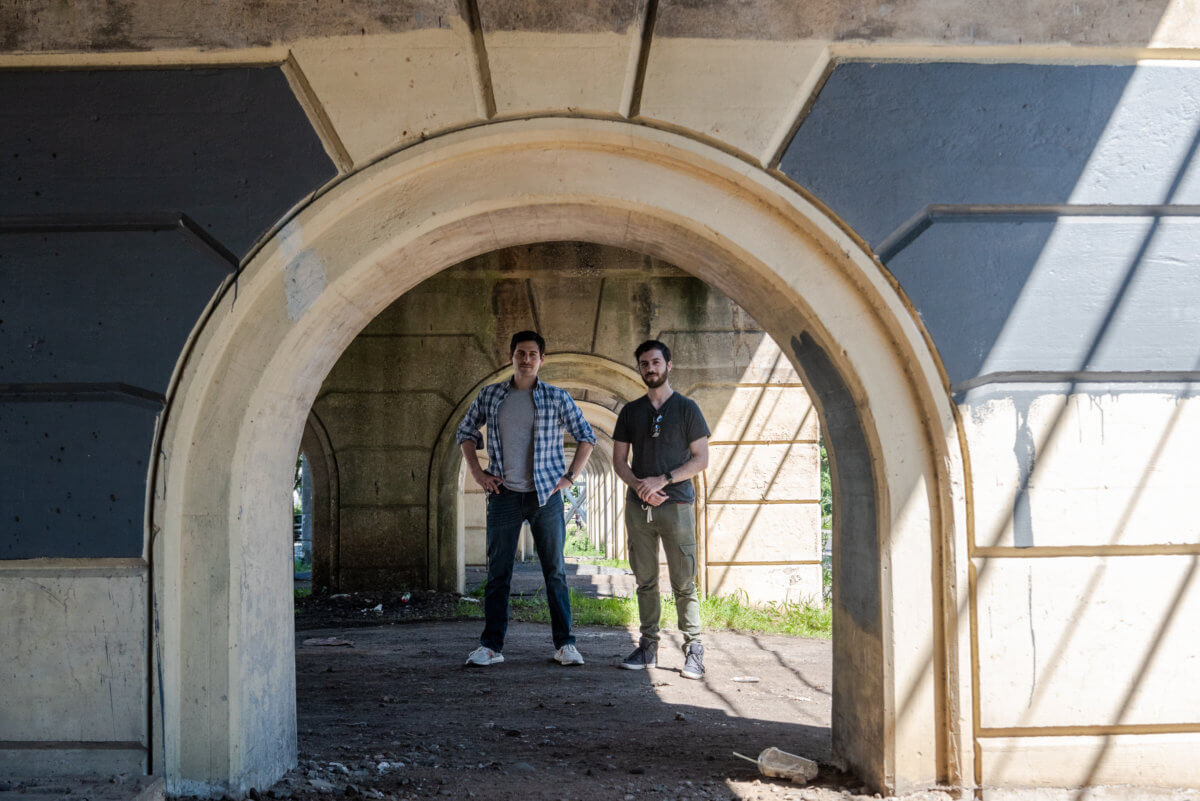
QNS: While developing the story, you both realized that the film wasn’t about Engel’s former neighbor but about someone else watching this person?
Egan: “When you’re in the grip of going through something, you don’t necessarily see it. But the person who’s coming from their life sees it. And what’s interesting is when they start to slip and maybe start to take on certain characteristics or traits. We started to play with that. We played with guilt and how it that can lead to things like paranoia and loneliness.”
QNS: So, Michael witnesses a murder?
Engel: “He doesn’t witness a murder. Iris, played by Caroline Ryburn, calls him in, very much like my uncle, and she’s like, ‘Can you please stay here with me tonight?’ It gets too weird for him, and he leaves. Then when we see him, he doesn’t sleep, as he doesn’t throughout the entire film. And that morning, he gets a call from her saying that the next-door neighbors — the neighbors she claimed tormented her — were killed with a gun, very much like the one he had seen in her apartment the day before. Even though he didn’t do anything, he feels such tremendous guilt for not saying anything and for not doing anything. And he’s just walking around with that.”
QNS: How would you describe your main characters?
Egan: “The main character is a good person. But also inactive and always trying to avoid things, in a way. One of the things that [Engel] and I stumbled across as we started to do it more was that paranoia can be a form of narcissism because you think that you’re so important, that some people have it out for you, that you did something. And that can be borne out of something like guilt of not doing something when you knew you should have done something, and it cost someone else dearly and affected the world that you live in a very interesting way.”
Engel: “My father would always call this one person [the elderly female neighbor] ‘mouse,’ because he would always hear about things going on in her life, and she was very inactive. So you had these external pressures, and she’d only fester with them and never act. He would call that type of person “a mouse going into her hole.” So you can apply this to the main characters of the film. Then you have this other aspect of a mouse: When they’re caught in a mousetrap, the glue trap, for example, and what they do, they will try to get out, and the deeper they get in the glue, most of them will chew off their legs. Now, you have this guy, who is a mouse at heart, but now feels so looked upon and so guilty that he’s going to start chewing off his own metaphorical leg.”
Egan: “When we first meet him [Michael], and he’s dealing with this woman [Iris], we’re watching her go crazy. We’re watching her neuroses, and we see it through his eyes where it’s like, ‘this is kind of ridiculous.’ [Engel], in a very subtle, brilliant way, has it where you’re with Michael on his journey. You don’t realize how she got there.”
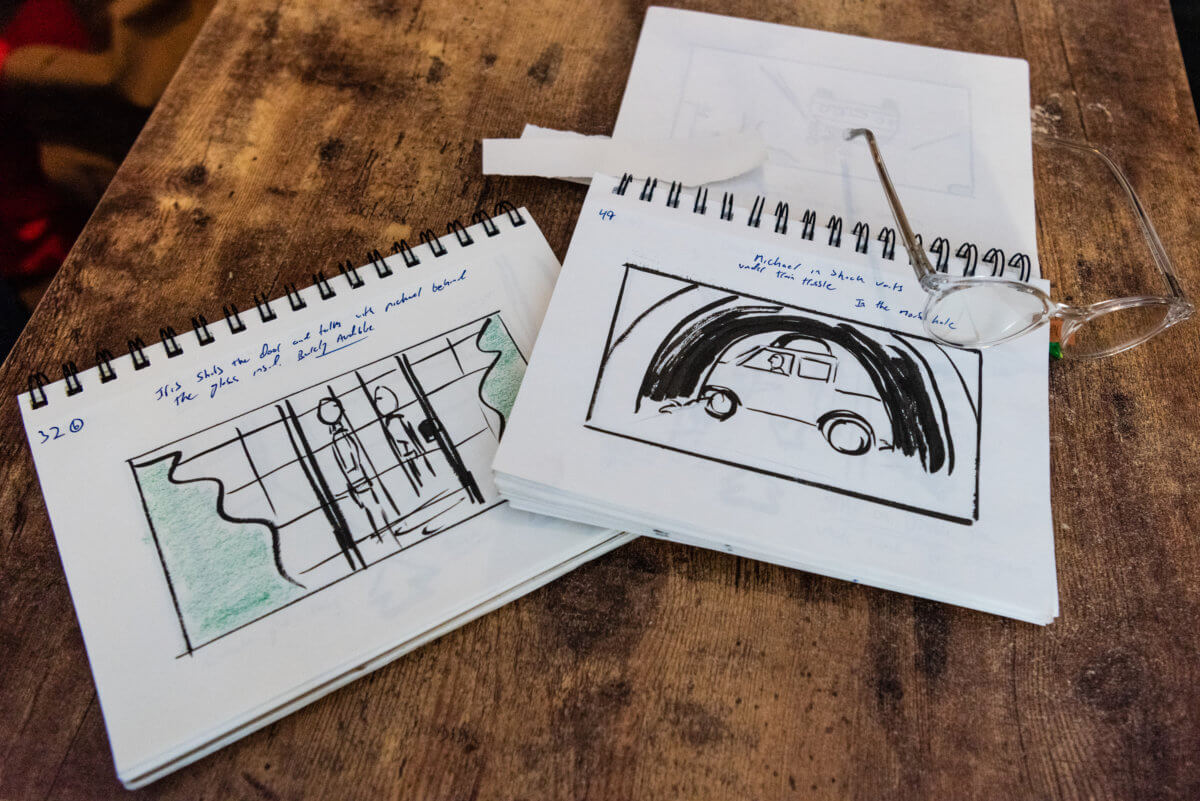
QNS: Cinematographer Derek Mindler, who was introduced to Engel by the film’s producer, Vanessa Bontea, shared that he felt that after reading the script, they needed to shoot the film with an anamorphic lens.
Mindler: “I love films like ‘Taxi Driver’ and ‘Zodiac,’ which were our visual style references. So we were aiming for something within that realm. And we felt like we needed to shoot the film on one anamorphic lens because that provides the widescreen vista kind of feel. We found the perfect kind of custom-made lens on eBay.”
Engel: “That’s very rare. Typically, films are shot with five, six different lenses.”
QNS: How did that work out? What kind of trouble did you run into, and what were the challenges?
Mindler: “It was a little difficult sometimes to get wide shots because the lens was a 50 millimeter lens. With anamorphic, it’s naturally wider than that, but it was still kind of tough to get wide shots, especially inside.”
QNS: When you were in a very tight space, how did you overcome that?
Mindler: “We just had to be creative. We had like a small camera package, so we were able to get back in corners, and every inch mattered. I was crammed in corners, looking at the screen. But I think the one lens thing is something that all filmmakers should at least try at some point because it provided a really interesting creative challenge and visual consistency throughout the whole film that is shot with the same lens. The front glass piece literally looked like somebody had scratched it with sandpaper.”
Engel: “But it ended up giving us this very glowing, old-school feel to it.”
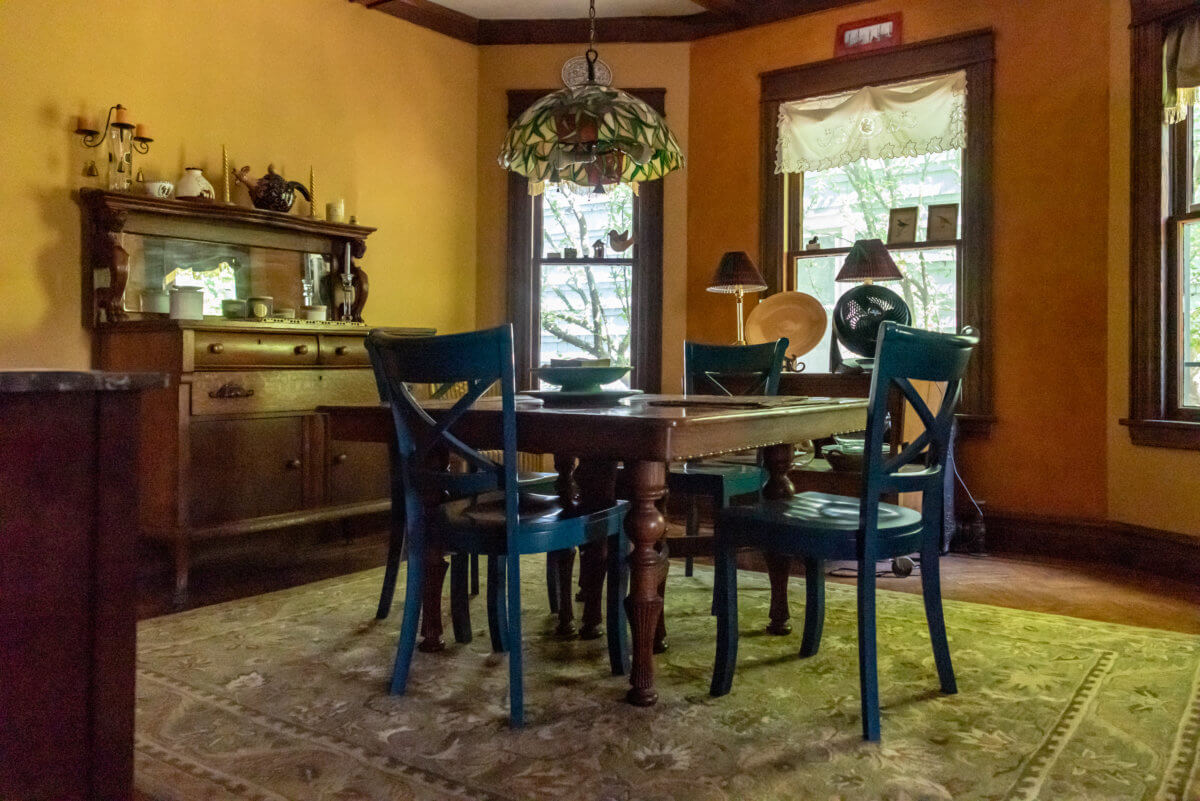
Mindler: “So in the film, you can see, there’s like a little bit of glow to the highlights, and that’s not because we used a filter — it’s because of the lens. We have this interesting 3-D texture and feel to the whole film because it’s the same lens the whole time.”
Engel: “As you know, 50 millimeter is how the human eye sees. So I felt that was also perfect because you’re looking through [Michael’s] eyes. It feels very natural, in a weird and creepy way. But I just loved the creative challenge. And considering what Iris and Michael are going through and they’re always watching, it lends itself to sort of a binocular sort of a look like you’re peeking in.”
QNS: For costume designer Cristina Andrade, the challenge was to express the characters’ psychological changes through their clothing.
Andrade: “I remember [Engel] assembling eight pages of the script, and I made something based on that character outline, and then we started pre-production. We had almost 30 movie days, so I had to jump back and forth between days. Day one to day 25 to day 13, all in one day. I was the only one working wardrobe, and I was taking care of every character, every extra.”
Engel: “And most of your characters were having massive psychological changes.”
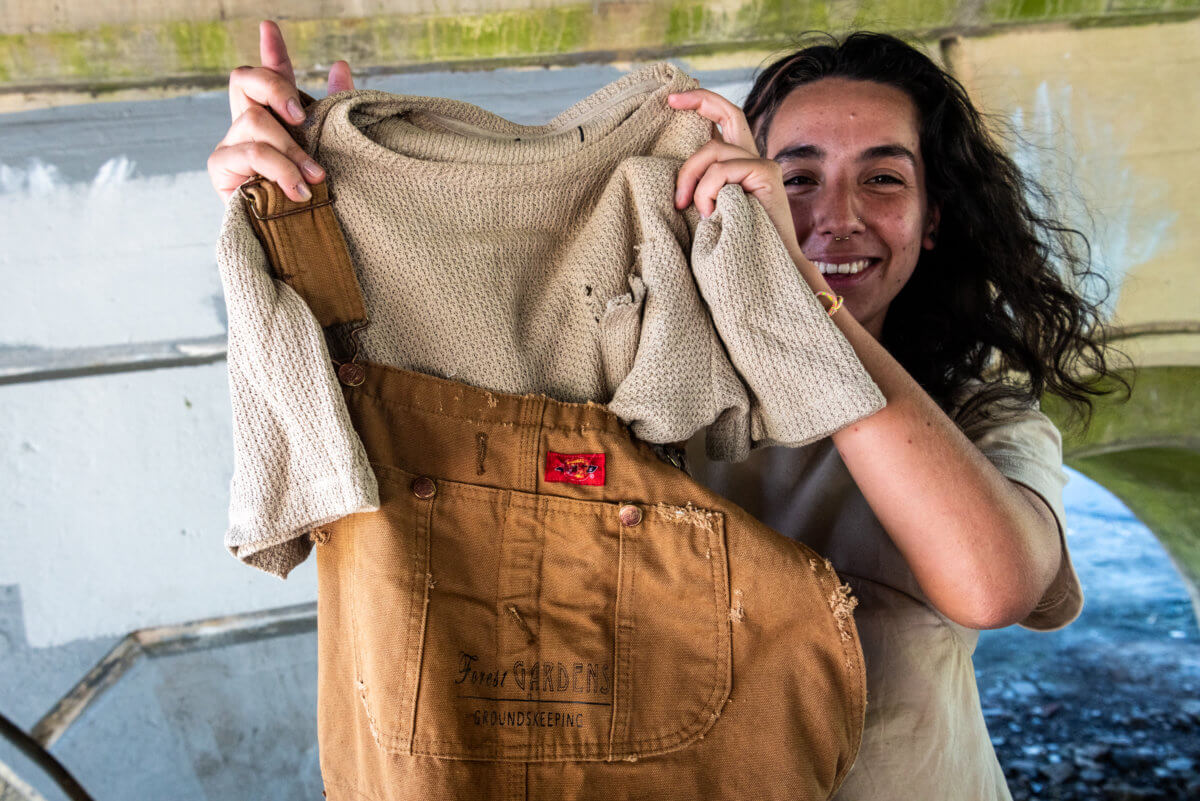
QNS: So, does the wardrobe reflect their mental state?
Andrade: “Yes, you can definitely see how they digress or progress. So, in the beginning, everyone’s costume tells the same story, and Michael actually is really put together; he keeps everything in its place. And then by the end, he is really distraught, a disheveled mess — not thinking about anything else but the hunt.”
QNS: At the end of the movie, will we learn why Iris is the way she is?
Engel: “I think the journey in the film is an answer to how she got to where she is. I think the ending is cathartic in a way. It’s deserved, in a way, because ultimately, the film is watching somebody dig themselves deeper and deeper in the hole that they don’t have to be.”
To learn more about “Mouse” and the Queens World Film Festival, visit queensworldfilmfestival.org.

